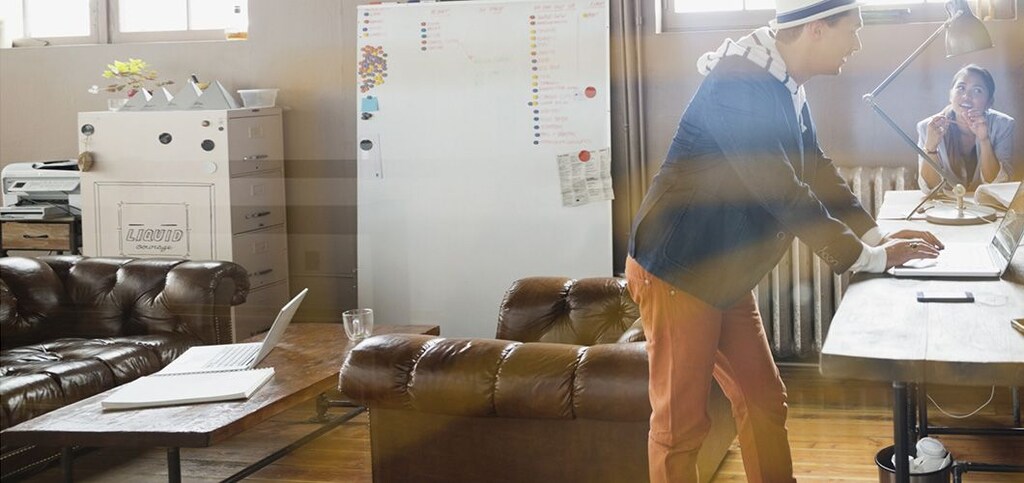If you're sitting down right now to read this, you might want to consider standing up. There's a growing trend in the workplace to get out of the chair and stand up on the job.
"Though I'm still relatively young at 28, I noticed that when I sat and taught and then sat and wrote that my knees creaked and popped with a ferociousness that rivaled my 94-year-old grandfather's knees," says Kreigh Knerr, a former teacher who is now the director of Knerr Learning Center in Wisconsin. "To keep my extremities happy, I experimented with a standing desk for writing. It turns out that I love it."
Knerr says his productivity rises when he stands to work, and he'll even look for an opportunity to stand when he is away from the office and out at public places like coffee shops.
Stand Up
The movement to stand on the job has been fueled by a TED talk by author Nilofer Merchant, who called "sitting the new smoking." She encourages business meetings that combine walking and talking instead of sitting and talking to combat the physical inactivity that puts us at risk for illness and disease.
Mary Gorham Malia, CEO and founder of Gay Girl Dating Coach, made the switch to a standing desk about 18 months ago and loves it.
"After five years of just sitting at a desk day and night while growing my business, I knew my health was suffering," Malia says. "I decided it would be an easy way for me to get more physical through my long workdays."
Malia created her own desk by purchasing a tabletop and legs at a restaurant supply store and having a welder cut the legs to the perfect height and then assemble the desk.
"My standing desk has me moving more, period," Malia says. "I feel more engaged with my work, my posture has improved, which means my breathing has also improved. I've had a tendency to hold my breath while seated at work."
The Next Step
Ben Wallach, vice president of technology and co-founder of Web2Carz, an online auto and lifestyle magazine, moved out of his seat and over to an elevated desk a few years ago.
"Although a bit challenging in the first couple months, I did get used to it and, with frequent breaks throughout the day, I was able to get my work done," Wallach says. "About a year into standing, I was ready for a new challenge and came across a treadmill designed for workstations. I purchased it and since then have never looked back. I typically walk at a pace of 0.4 miles per hour, which is slow enough to allow me to type and focus."
Kathleen Hale believes so strongly in standing desks and treadmill desks, she has made them her business.
"I used to be a desk jockey, spending hours sitting at my desk. All that sitting started taking a toll on my mood, my back and my energy," Hale says.
She admits when she first heard about treadmill desks, she was a skeptic, but she fashioned one and gave it a try.
"To my surprise, I fell in love," Hale says. "My back pain disappeared. I was energized at 4 p.m. instead of fighting off sleep. I actually looked forward to getting to work in the morning. I wanted more people to experience these same feelings, so with my partner, we developed designs and worked with experts to create a sleek, quiet and affordable treadmill."
That design became her business, Rebel Desk.
While standing desks and treadmill desks may seem to be trendy, Rosalie Robinson, partner at Consilium Consulting Group in Dallas, says the momentum toward them has been building in the past few years.
"In the last company I left, we had a waiting list for use of the treadmill workstations," Robinson says. "This is not just a fad, it’s a change, because people realize they need activity and movement throughout their day."
Read more articles on productivity.
Photo: Getty Images




